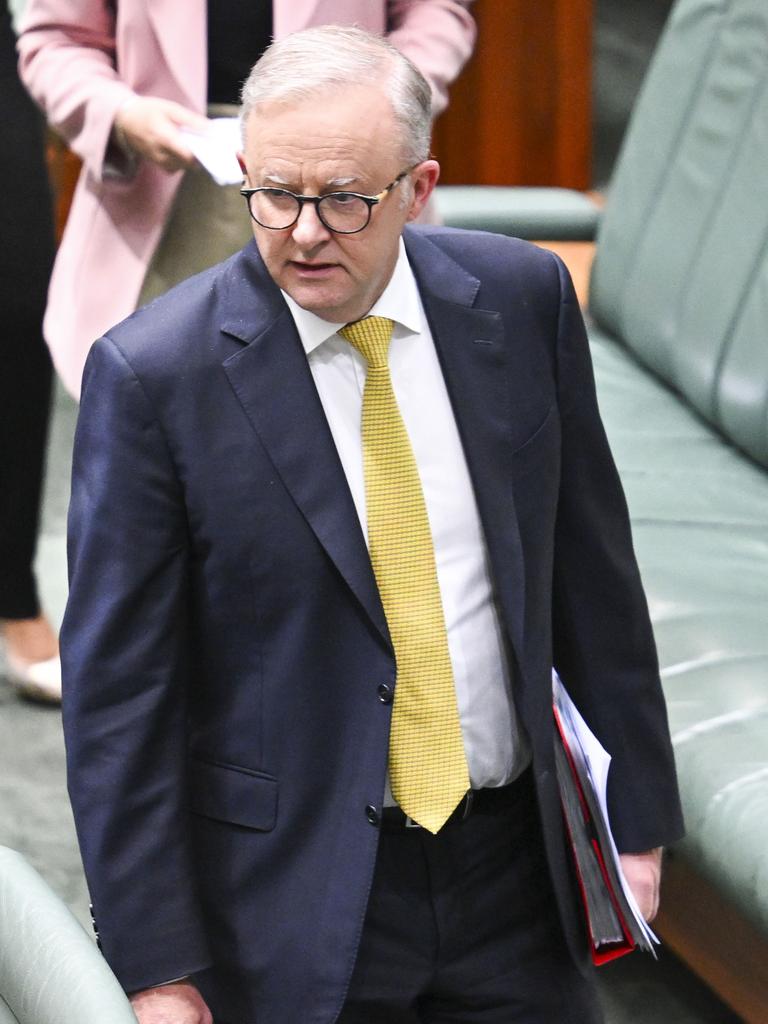Summer of blackouts could hamper Labor’s return in 2025
A summer of blackouts in Australia’s two largest states could spell electoral disaster for Anthony Albanese as experts warn Australians were voting on the cost of electricity over climate change concerns.
A summer of blackouts in Australia’s two largest states could spell electoral disaster for Anthony Albanese as experts warn Australians were voting on the cost of electricity over climate change concerns.
As rumours of a March or April election grow, political pollster Kos Samaras warned Anthony Albanese to watch out for voter backlash if warnings of blackouts in NSW and Victoria come true.
Mr Samaras said many of the key seats in play at the next federal election — like Gilmore and Bennelong in NSW and Deakin and Menzies in Victoria — were spread across the east coast where energy regulators have delivered dire warnings on supply shortages.

On Wednesday, NSW residents were told not to use their dishwashers and washing machines and to turn up their airconditioners to 26 degrees between 3pm and 8pm.
The next day, a storm caused a power outage causing a blackout in Sydney’s CBD.
Guests paying big bucks to stay at the five-star Fullerton Hotel were told they were working to get power back as soon as possible.
“Summer with blackouts in two of the biggest states where the election is one or lost is definitely a problem for the government,” he said.
“Most of the seats in play are in NSW and Victoria.
“Everything that has happened over the last two-and-a-bit years is going to make it hard for Albanese to convince Australians that his party’s plan on the grid is the better one.”
Mr Samaras said polling had shown voters were more concerned about the cost of electricity than climate change — a tricky trend after Mr Albanese failed to deliver on his 2022 election promise of bringing energy prices down by $275.

The Default Market Offer (DMO) is the maximum yearly bill an energy company can charge in a particular area based on average usage.
In the 2021-2022 financial year, NSW residents paid between $1393-$1907 annually depending on where they lived in the state.
In 2024-2025, this has jumped to between $1,810 to $2,499 for people without a controlled load and $2,495 to $2,918 for people with a controlled load.
The 2024-2025 Default Market Offer showed that in this financial year NSW households would pay between $17 and $28 less than the previous year if they do not have controlled load and between $59 and $190 less if they have a controlled load.
Households have also benefits from a $300 rebate from the federal government to bring down bills — but the underlying cost of electricity is refusing to budge.
Grattan Institute Energy Expert Tony Wood said dying coal stations, natural disasters, volatile gas prices and a slow renewables roll out created the perfect storm for consecutive increases of more than 20 per cent in 2023 and 2024.


“Coal is proving to be pretty unreliable at the moment,” Mr Wood said as NSW braced for a summer of blackouts with four coal stations offline on Wednesday.
“In the middle of 2022 we had huge disruptions to coal and gas supply, we had really bad weather in Australia, flooding of coal mines, low renewable output and gas was expensive because of the war in Ukraine, generators in Queensland’s coal ones were offline because there was a major explosion and damage.
“That was a few years ago now but it takes a while to recover.”
Energy economist Liam Wagner said a lot would have to go right for the price of electricity to come down.
“If nothing else changes in the world and we were to have a timely transition to renewables and we would have stable policy, and international conditions would remain the same, then I could predict that prices would go down,” he said.
Mr Wagner said that it was a safe bet that prices would not come down with a supply crunch continuing over summer.
“It’s a safe bet that the coal fired generators will have more issues in energy production,” he said.
“It’s hard to predict but given planned maintenance and the likelihood of outages in those older generators, there will be shortage of supply.
“That then pushes the price up again.”




